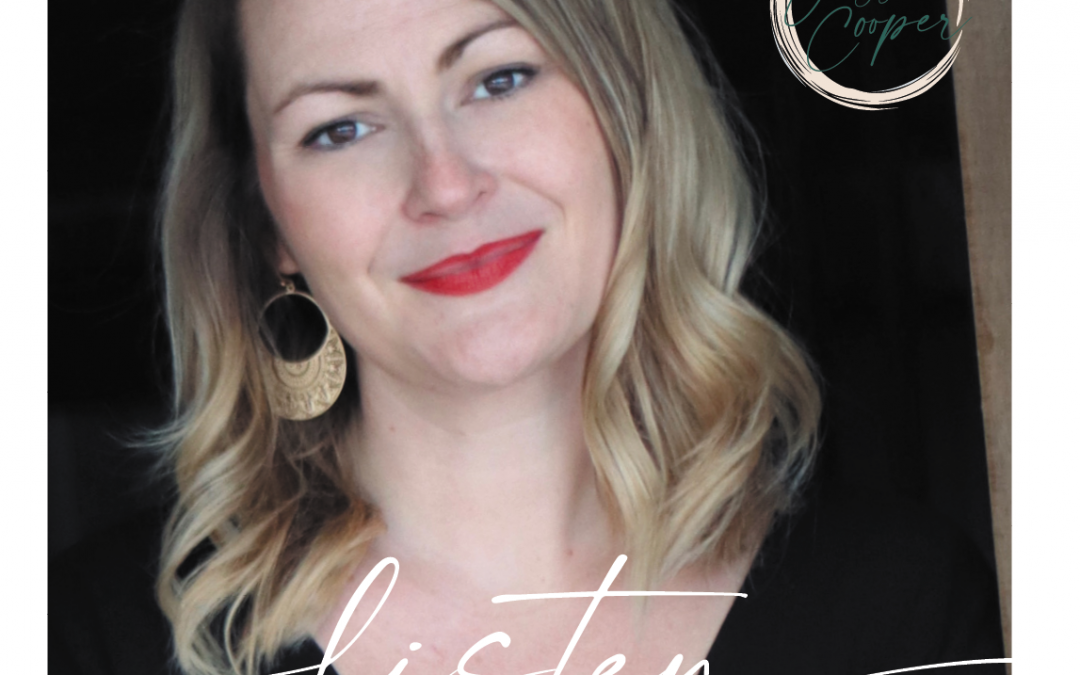
by IABA Team | Nov 8, 2022
Choosing a daycare program is tough enough for neurotypical children. Adding autism to the equation can make the process seem like scaling a mountain.
So, what can you do to make the process easier? Where should you start looking? Let’s take a look at some great ways to help select a daycare program for children with autism.
Where do you Need Care?
Many ASD service providers offer in-home and clinical services–knowing which service you need can help narrow down your search before it even begins.
In-clinic autism services, including daycare, are great options for children who can adapt to changes in routine with some help. Children less affected by sensory stimuli are more likely to benefit from in-clinic daycare services.
At-home autism services are best utilized by those with special needs. Some clinics may not be set up to handle the specific needs of a child. Children that have many special needs (foods, toys, scenery, etc) and/or extreme difficulties with changes to routines may be more suited for in-home daycare.
Typical daycare programs may be an option for children with autism. There are things to look for specifically before enrolling a child with autism in a traditional daycare program:
- Staff experience with autism
- Individualized activities for children
- Taking special requests (if you provide toys, activities, snacks, etc)
- Communication
Talk to the Staff
Talking to the staff and caregivers about your child’s needs and what their daycare programs offer is a great way to find out if a program will be a good fit. While websites often list services, features, and more, it is not a substitute for actually talking to someone.
A great thing to remember is to be sure to make a list of questions ready for anyone you talk to. A great list will include any special needs your child has or worries you have. Getting the answers you need is one of the keys to finding a great daycare program for your child.
After you find a care provider that can take care of your child’s needs, be sure to ask questions about the staff. Things like:
- Staff experience (especially with any special needs your child has)
- Staff licensure
- Communication policies (reports and calls with parents/families)
- Goal setting (both in-clinic and at home)
Make sure to get satisfactory answers to these questions from any care provider you talk to–the care of your child will be handled by them!
Daycare Reports
Knowing how your child is doing is very important when it comes to children with autism & school/care programs. Most autism service providers will have daily or weekly reports on your child’s behavior and progress. Making sure the information you need is on daycare reports is an important part of a great daycare program’s job.
Continuing care from clinic to home (or from in-home clinician to parent) is a huge part of helping children with autism develop. Great reporting from a daycare provider leads to great communication between the parents, the daycare provider, and the child.
ABA Therapy from IABA Consultants
If you have questions regarding autism treatment, education, or plans to use ABA therapy, we are here for you! Our goal is to make sure no family is turned away due to financial constraints. Our therapy team would love to talk to you. Find the location closest to you and give us a call. We’re here for you.

by IABA Team | Oct 31, 2022
Autism has traditionally been diagnosed more frequently in males, but new studies have shown that autism may have nothing to do with sex. The lower prevalence of autism in girls may be due to specific behaviors that indicate autism going unnoticed.
The signs and symptoms of autism do not differ between boys & girls. The way some signs and symptoms of autism can be shown through behaviors, however, can differ.
General Signs of Autism
Before looking at how behaviors that potentially indicate autism may differ between boys and girls, let’s look at some of the general signs of ASD. Signs of general autism normally include:
- Social behavior issues
- Communication issues
- Problems understanding relationships
- A very narrow set of interests and areas of focus
- Stimming (repetitive motor actions and/or sounds)
- Difficulty adapting to change
- Extreme reactions to sensory stimuli
Signs of Autism in Boys
The reason autism diagnoses have been observed at higher levels in boys is that the behaviors most people associate with autism frequently appear in young boys. These signs include:
- Repetitive Actions & Play. Boys with autism are more likely than girls to engage in extremely limited and repetitive actions & play.
- Narrow Fields of Interest. Fields of interest including mechanical or data-driven topics often appeal much more to boys with autism than girls.
- Aggression. Aggression related to autism manifests much more often in boys than in girls.
- Social Unawareness. Boys with autism seem more socially ‘awkward’ than girls with ASD. Younger boys with autism often seem socially withdrawn and uninterested, unlike a larger number of young girls with autism.
Please note that signs of autism can differ greatly from person to person. Some of the signs listed in both of these lists can surface in both boys and girls. These lists are simply to show signs that occur more often when diagnosing autism in young girls & boys.
Signs of Autism in Girls
Some of the criteria used to diagnose autism may go unnoticed by parents or teachers when it comes to girls. These signs can manifest in different ways. Some of the signs of autism that girls exhibit more than boys include:
- Introversion. Girls with autism may be more introverted or be considered to be ‘shy’ than boys. While being introverted doesn’t necessarily mean a girl has autism, being severely introverted may be a warning sign.
- Hyper focusing. Hyper focusing is, broadly speaking, complete absorption into a task. In girls with autism, hyperfocus totally prevents them from dividing attention between more than one thing.
- Lack of social awareness. Another sign that a young girl may have autism is a lack of social awareness. This manifests itself in a girl being unable to establish the relevance or importance of others, leading to a lack of understanding social cues.
- Auditory/Sensory Processing. Severe auditory and other sensory processing sensitivities or issues may also be a sign of autism. This is different than being scared of alarmed due to loud or explosive sounds and more about issues with sounds or sensory stimuli most people take no issue with.
- Social Camouflaging. Social camouflaging can be the most difficult sign of autism in young girls for parents to detect. Young girls with mild autism may go undiagnosed due to seeming socially neurotypical. This makes looking for other signs even more important.
ABA Therapy from IABA Consultants
If you have questions regarding autism treatment, education, or plans to use ABA therapy, we are here for you! Our goal is to make sure no family is turned away due to financial constraints. Our therapy team would love to talk to you. Find the location closest to you and give us a call. We’re here for you.

by Jessie Cooper | Aug 4, 2022
This past weekend I celebrated the 10th Anniversary of Instructional ABA Consultants. 10th! It is hard to believe that a decade ago, with no business experience whatsoever, I founded this company. A decade ago I was 25, clinically talented, and pissed as hell that my clients with state funding were not able to access services.
I celebrated our 10-year anniversary by walking into our Oak Lawn clinic and meeting the first Medicaid client in our company on his first day of ABA therapy. A decade later we are still on a mission to provide access to care across funding sources. The difference (among many) is that a decade later I stand with my work tribe leading together; it is not just me anymore. It’s us building my business.
There are many times I look at myself in disbelief. It’s hard to imagine that fresh out of graduate school with a new degree and passion I would be able to forge my way into the creation of my company. At the time I was fearless. I simply saw that there were thousands of individuals with autism and disabilities being denied care in Illinois because of their funding; medically necessary care. Money, not humanity, was making the decision for them.
Life Changing ABA Funding
As a clinician, I knew that applied behavior analysis was/and is life-changing. It is a science that seeks to understand why an individual has a barrier to learning & communication and can use maladaptive behaviors instead. Each client I worked with before founding Instructional ABA Consultants had something to say and the science of behavior analysis gave me the tools to listen.
The tools to listen to a child who was non-verbal but wanted to speak. To listen to a blind man and hear he was hitting others because he was scared when they approached him from behind. To listen to an adult with autism who routinely hit his peers because his feet hurt and he needed new shoes; he was in pain. And tools to listen to the parents who had willingly signed their children up for residential care only to find their children malnourished, abused, and traumatized. To hold all of their hands with care and kindness while offering them treatment that worked.
Yet this treatment was short-lived. When the crisis ended and our team was discharged the treatment program ended. The clients were left to live a life without ongoing care, their parents at the mercy of a system without the type of therapy and care their children needed. What might have seemed impossible to others seemed so simple to me. These families have state funding, I have a license and the science they need. Why not just put the two together? That is exactly what I did.
Making Positive Changes Yourself
In the beginning, Instructional ABA Consultants was just me and a caseload of perhaps 20 clients. I knew then that I would have to learn about how to scale my own services by building an organization that had my mission at its heart and the science implemented correctly. These past 10 years have been a journey. I have learned more about myself and how to run a business than I ever thought possible. I can tell you more someday I’m sure. But for now, the most important thing that I have learned is that as a leader listening can never stop.
The key to positive change, whether it be for a client or for the capacity of the organization itself, is just that; listening. The systems and clinical programs surrounding both the organization and the clients should always have the needs of the clients and employees at the forefront–at its heart. I have been lucky enough to have built a leadership team whose hearts emulate the mission of IABA (and people who are easily smarter than me). They also know that listening first and then creating is the foundation to our success. All of their incredible skills are used daily because of this culture and a decade later I sleep with a full heart knowing that hundreds of clients are served in the same capacity they were when I was doing it myself a decade ago.
Fighting for Basic Needs
To top off my celebration, after a good margarita, I watched “Crip Camp” on Netflix with my partner. It is a documentary about the development of the Americans with Disabilities Act and the incredible leader Judy Heumann. The documentary begins by talking about Camp Jened, which ran between 1951-1977. It was a camp for disabled teenagers that created an environment where they were treated the same as their abled peers. It was a place where they were allowed to be regular teenagers and have their voices heard. It’s heartbreaking but also true that this was not their experience outside of the camp.
Following her time at the camp, Judy Heumann became an activist who ultimately not only got the ADA enacted but also implemented. In the film, when asked how she did this, her response was simple, “I listened to the stories of my fellow Americans with disabilities without question; if they told me about their experiences I knew it was true.”
That right there is it. I’m a small fish in the big sea of life but if Judy could pass the ADA Act and over 60 years later I could start and successfully run my company by simply listening, then I know that this is a tried and true method of change. I look at our local news each day, as well as my own experiences, with a bruised heart. I am hurt by the loss of humanity in the systems that suppress us. I do not have words to describe my grief for the darling ten-year-old girl who was raped and now is part of the national focus of hate and questioning. This is not the way.
The way to rebuild our world and the systems that support us is not by challenging the experiences of our fellow human beings. The way to build just about anything is to listen. Listen, believe, and do something. Even if that something is just to make your small corner of the world a better place.
Xoxo,
Jessie Cooper

by IABA Team | Jul 26, 2022
Getting health insurance to cover certain needs can be a pain in many cases. Health insurance and autism, however, are in a category of their own.
The most recent data from the CDC estimates that 1 in 54 children will be diagnosed with autism–a number that seems to be increasing every year. Health insurance plans and policies are changing due to the prevalence of autism, but it can still be hard to get coverage.
Here’s what you need to know.
Getting an Autism Diagnosis
If you are concerned about the development of your child, speak to your pediatrician as soon as possible. Your pediatrician will be able to help you find a suitable professional to conduct an autism evaluation.
A diagnosis needs to be made by a licensed medical professional before insurance will offer any coverage (pediatric psychologist, developmental pediatrician). Many states have laws that require insurance providers to pay for autism evaluations. If you are unsure if your provider covers evaluations, be sure to speak to a representative to make sure.
After a diagnosis, you will get a prescription for services from the doctor, most likely for ABA therapy. You will need prior authorization from your insurance provider to get coverage for a new autism diagnosis/prescription before starting any programs.
Costs of Autism
According to the CDC children with autism have medical expenditures around $4,000-$6,200 more than a neurotypical child. On top of this, paying cash for an intensive inpatient behavioral program (20-40 hours per week) can cost around $50,000 per year.
Costs like these are why it is extremely important to know what your insurance provider will cover and what they won’t. If you currently have a family health insurance policy, it is best practice to call your provider and speak to a representative about your options.
Common Issues with Insurance Coverage & Autism
Many medical conditions and procedures come with ‘hidden strings.’ Autism is no different. Insurance plans often have policies in place that block coverage based on the type of service/therapy being used, the provider, or the health plan itself.
Common issues families face with insurance companies and autism coverage include:
- Coverage only specifies one type of autism therapy (usually ABA)
- Specific plans or therapies are denied coverage due to certain insurance plans categorizing some therapy coverage as being for disabilities only (not autism)
- Out-of-network providers are not covered in any way, even partially (it can be hard for some people in rural areas to find nearby in-network providers)
- Services not being covered due to a policy classifying them as ‘educational,’ thus not health care
Issues like these (and other related ones) need to be taken up with your insurance provider as soon as possible–preferably before any sessions have started. Also, be sure to talk to any provider you are considering about billing. Misbilling certain services can create an issue with your insurance provider–make sure the healthcare provider you choose knows their billing!
Autism, Health Insurance, & the Law
Each state has different laws and regulations regarding how insurance providers provide coverage for autism. The National Conference of State Legislatures has a great list of these laws, broken down by state.
The laws vary by state, meaning that some people may have trouble getting an insurance provider to cover a specific service–especially those who have recently changed residence.
ABA Therapy from IABA Consultants
If you have questions regarding autism treatment, education, or plans to use ABA therapy, we are here for you! Our goal is to make sure no family is turned away due to financial constraints. Our therapy team would love to talk to you. Find the location closest to you and give us a call. We’re here for you.

by IABA Team | Jul 19, 2022
There are many types of therapy that can help with specific symptoms of Autism. One type of therapy that is often underlooked when it comes to treating ASD is occupational therapy (OT). In tandem with a solid ABA program, OT can have extremely beneficial effects on development.
OTs that specialize in helping children with ASD are able to evaluate the needs of a child and put a unique therapy program in place. Let’s take a look at what OTs do when it comes to helping those with autism.
Occupational Therapy & Autism
The first thing to go over is the skills that OTs can help individuals with autism learn. Skills OTs help with include:
- Cognitive skills
- Communication
- Motor skills
- Sensory skills
- Social skills
Each of these skills has specific ‘sub-skills’ OTs focus on:
- Cognitive Skills. Cognitive Skill training focuses on attention, mental stamina, and focus.
- Communication. Communication training focuses on speech and nonverbal communication.
- Motor Skills. Motor skill training focuses on balance, posture, and using objects/tools.
- Sensory Skills. Sensory skill training focuses on responses to sensory stimuli and sensory defensiveness.
- Social Skills. Social skill training focuses on emotional regulation, interacting with others, and behavior.
How Does Occupational Therapy for Autism Work?
Occupational therapy for autism is different from standard OT for several reasons. OTs with an autism-centered practice work with both clients and their families, making sure plans stick inside and outside of a clinical setting. OTs will help families understand any cognitive-behavioral approaches being used so they can continue at home.
Autism OTs emphasize mental health and well-being in order to make clients feel safe in the environment where therapy takes place. Occupational Therapy for autism often includes teaching self-care routines, so making clients feel safe both in the clinic and at home is essential for success.
Goals of OT for Autism
Like other autism therapy methods, OT focuses on helping a person with autism’s quality of life. The ultimate goal is giving clients as much independence as possible. The areas of life OT therapy for autism focuses on include:
- Independent communication
- Working with others
- Listening
- Gratification and delayed gratification for completing tasks
- Expressing feelings and emotions to others
- Creating and maintaining friendships and other relationships
While the goals of OT may seem to line up with the goals for most autism therapies, OTs are able to combine their occupation therapy training with ABA or cognitive behavioral training to create an occupational program perfectly suited to the needs of a person with autism.
ABA Therapy from IABA Consultants
If you have questions regarding autism treatment, education, or plans to use ABA therapy, we are here for you! Our goal is to make sure no family is turned away due to financial constraints. Our therapy team would love to talk to you. Find the location closest to you and give us a call. We’re here for you.





